FutureMusic received our AudioFuse Studio review unit just as the Covid-19 pandemic seized New York City and brought the world to a screeching halt. The poor AudioFuse Studio got marooned in our NYC office for quite some time when the government shut down our building. We were able rescue this new audio interface from Arturia when we were allowed limited access back into the facility and it was subsequently sent to each of our five different reviewers for this long-term evaluation. The benefit to you, our reader, is that the Arturia AudioFuse spent even more time with each of our evaluators for our long-term test, providing plenty of opportunity to delve deeply into its many features. This provides you with a balanced and objective review from several different musical prospectives. Comments from all five reviewers are in quotes below.
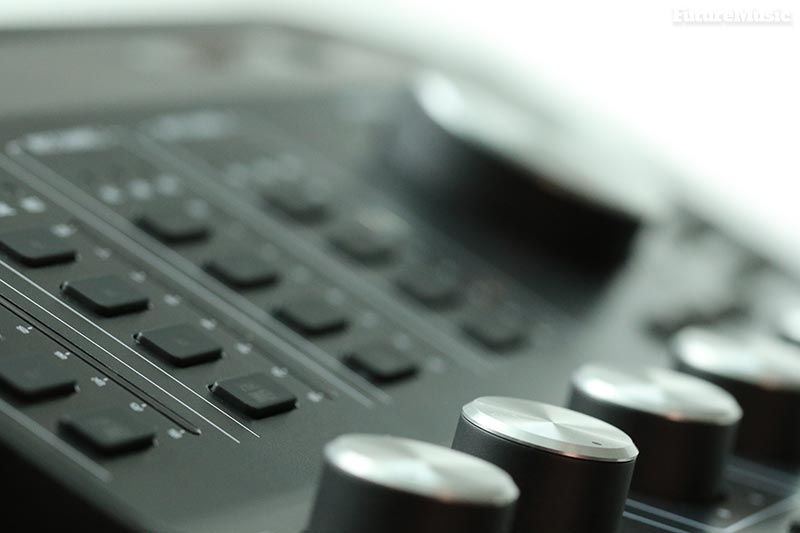
Even though audio interfaces aren’t new for Arturia, the French brand doesn’t immediately come to mind when considering options currently available on the market. However, the AudioFuse Studio is the third computer audio interface they have released. Arturia positions the AudioFuse Studio as the “Mama Bear” in their audio interface lineup, which includes the AudioFuse (“Baby Bear”) and AudioFuse 8Pre (“Papa Bear”). Turns out, the AudioFuse Studio is the perfect balance between the other options and is one of the most versatile audio interfaces we’ve come across to date. There is almost no sonic challenge the AudioFuse Studio can’t tackle, and even has an ace up its sleeve for all you podcasters out there. More on that later…
First off, the AudioFuse Studio contains four DiscretePro microphone preamps with independent Mic/Line circuitry, -129 dBu of input noise and a +/- 0.05 dB flat frequency response. “Considering its diminutive size, I was quite surprised how quiet the [AudioFuse Studio’s] preamps were in practice,” stated our singer-songwriter. Feel free to use any of the mics in your cabinet, the AudioFuse Studio features about 70 dB of gain with 48v of phantom power available for your condensers. You can choose between Mic/Line/Instrument inputs with 1/4″ inputs in a cluster in the back of the unit and dual Amphenol XLR/1/4″ connections on the front. The AudioFuse Studio also includes RCA phono inputs with ground for connecting your turntable. “I love, Love, LOVE that Arturia included phono inputs! The ability to simply connect one of my 1200’s directly [to the AudioFuse Studio] eliminates the need for an additional preamp…and decluttered my workspace,” revealed our DJ tester.
Each of the main inputs contains a “rotary knob with great traction and feel,” allowing you to “precisely add gain to your signal.” The pots are tight with zero play and “feel quite premium.” The same rotary knobs are utilized for the two different headphone amps, which include both 1/4″ and minijack outputs. Each headphone output allows you to select between Cue 1, Cue 2, Main and Mono at a touch of a button. A designated Talk Back button is also available with a built-in mic to provide communication to talent. You can also create a Talk Back channel for adding audio notes to your recording sessions, a feature often missing on units at this price point.

Arturia AudioFuse Studio Features:
- 18 inputs, 20 outputs channels
- 4 mic/instrument/line preamps with DiscretePRO technology
- 4 additional line inputs, with inputs 5-6 commutable to Phono
- 4 analog inserts on channel 1-4
- Bluetooth audio receiver supporting aptX and AAC
- 2 pairs of speaker analog outputs on balanced TRS Jack
- 2 independent stereo headphones outputs, on both 6.35 and 3.5mm TRS
- 2 independent analog line outputs with ReAmp capability (instrument level output)
- Complete monitoring section with individual level control for speakers and phones
- Direct monitoring ultra-low latency internal mixers
- 8 digital ADAT inputs/outputs up to 96kHz
- S/PDIF inputs/outputs or Word clock input, output/thru on Cinch RCA
- DiscretePRO Individual audio performance certificate delivered with each unit
- 24-bit latest generation AD/DA converters at up to 192kHz sampling rate
- USB-C interface compatible with PC & Mac, fully USB 2.0 compatible
- Comes with AudioFuse Creative Suite
- Metal desktop chassis with rubber bottom

The easiest way for electronic musicians to get their music onto Spotify, Apple Music, iTunes, Amazon Music, Tidal, Instagram, Facebook, TikTok, Pandora, Twitch & much more! Click the banner above or the Go Button to save 7% off of your signup! GO!
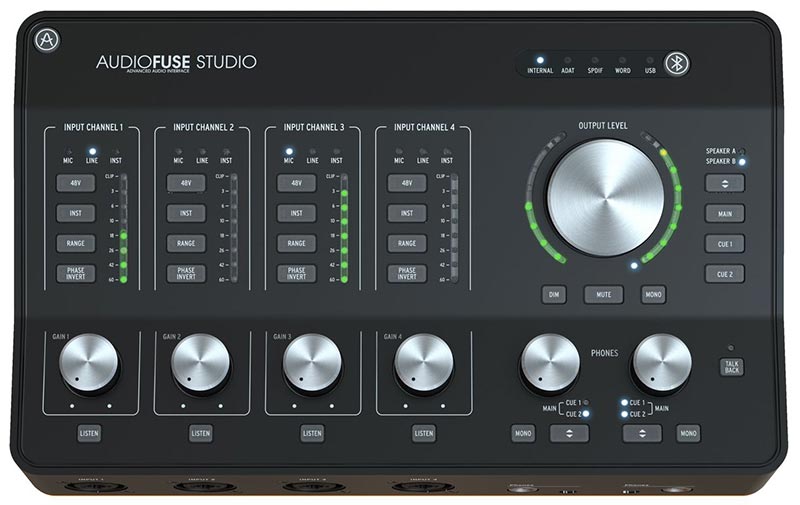
A large, limitless knob with the same brushed aluminum and rubber perimeter aesthetic sits proudly on the right side, but uses detents to give you stepped control over output volume. Two LED Left / Right output volume meters curve up and around the larger knob like the olive branches in the United Nations logo. It “looks very cool” compared to typical racing strip meters, but “if you put [the AudioFuse Studio] off to the side in your studio, the volume knob can cover one of the channels, which kinda sucks,” stated our rock band evaluator. This was one of the only grips we heard about the AudioFuse Studio, but three of the five evaluators mentioned it, so it’s worth considering if you plan to position your computer’s audio interface off to the side.
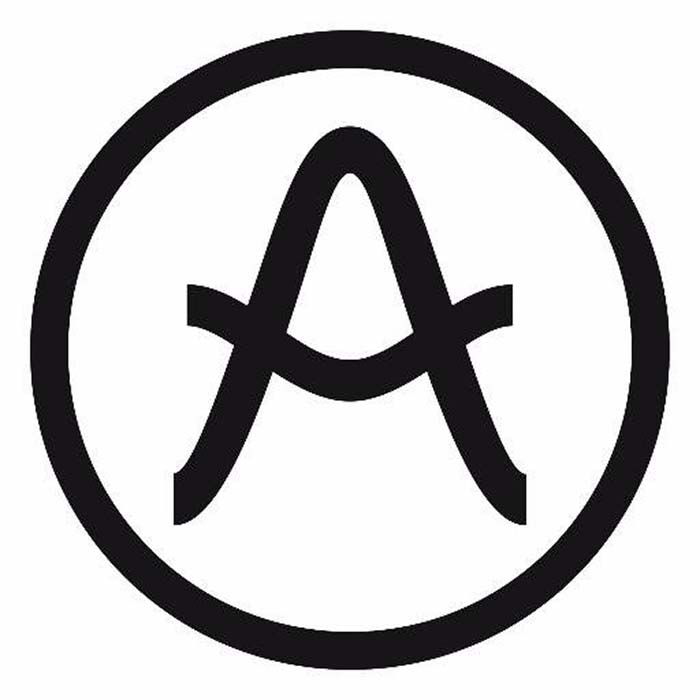

The AudioFuse Studio has the ability to support two sets of Monitors with Left / Right 1/4″ outputs on the back. Switching between the two couldn’t be easier with a dedicated button, allowing you to instantly compare a near-field and mid-field pair, for example. “Even with such a small footprint the dual monitor capability is an awesome feature for A/Bing my mixes between my NS-10s and LSR’s,” stated our EDM producer. The AudioFuse Studio also has MIDI I/O using Arturia’s minijack to DIN break out cables. WordClock input and output is also available via S/PDIF RCA. Another big plus for our EDM evaluator, “WorkClock Input was another huge bonus on the AudioFuse Studio. Not that the internal clocking came up wanting, but I was able to connect my BLA MicroClock to further increase the soundstage in my tracks. Hey, if you know, you know…”
Several other quality attributes were also noted by our evaluators, including the “rubber tread” on the bottom of the unit to eliminate the “there goes my interface when I accidentally test the limits of my headphones cable when leaning over to grab a frosty beverage.” The “built-in USB 2.0 hub saves me a few bucks and works great” and the secure, screw-in power connection eliminates “unscheduled endings to your recording sessions.”
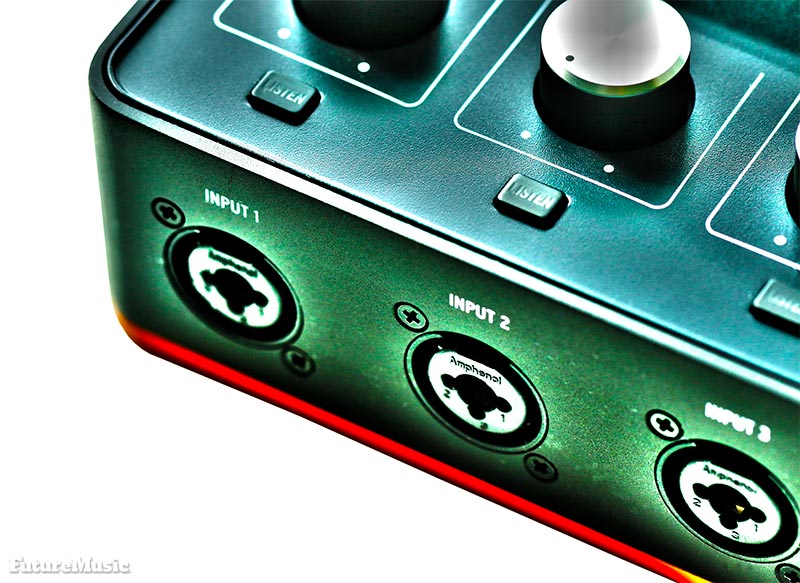
The inclusion of quality cables also appealed to all of our evaluators, While Arturia was one of the first manufacturers to include minijack to DIN connectors with their gear, they also provide a nice power supply and a braided USB-C cables for connectivity to your computer. “Well done!”
If this wasn’t enough, there are even more features, which separate Arturia’s AudioFuse Studio from its competitors in this price range. Each of the main four channels has Phase Invert and this isn’t something buried in their bundled AudioFuse Studio Control Center middleware, there’s a dedicated button on each channel. There are also Listen buttons on each channel, allowing you to monitor each signal pre-fader. A Control Center launch button is also available, “a savvy usability feature” that allows you to bring up their Control Center software instantaneously without having to dig around for it on your computer. “I know this isn’t something that’s a big deal, but I have to mention the AFCC button on the interface. Arturia was obviously listening to their customers…and this is something that ALL companies should include.”
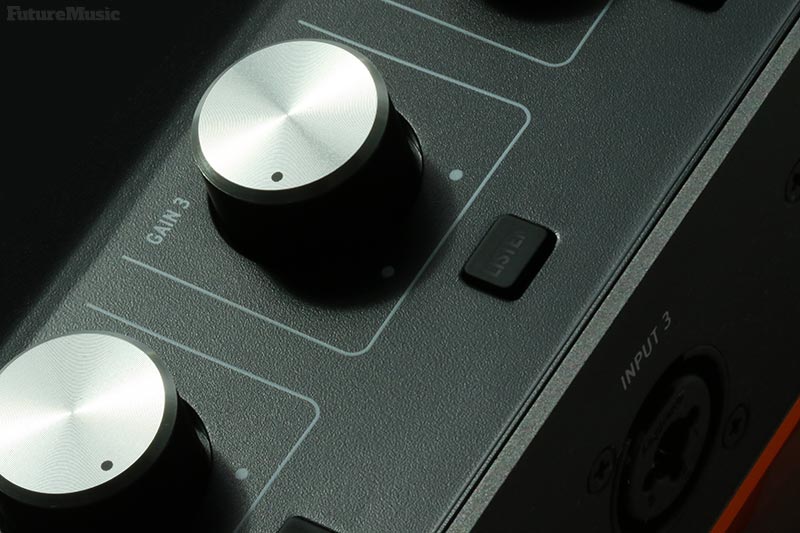
Let’s ReAmp!
If the multitude of inputs and outputs wasn’t enough, Arturia also included optical ADAT – S/PDIF connections for expandability and additional I/O. Furthermore, four Inserts are available for individual processing on each of the channels. And then there’s the ReAmp feature, which blew away both the singer-songwriter and rock band reviewers. “Holy $&@#! ReAmp is sick!” We’re not sure how Arturia came up with this feature, but ReAmp provides the ability to send a signal out of the AudioFuse Studio to your favorite amplifier, mic it up and simultaneously record it back into the AudioFuse Studio with the dry signal. Our guitarists loved this feature, but our EDM producer also used this on his drum machines to add tube saturation and overdrive. “ReAmp is obviously for guitarists, but I had a blast experimenting with this feature and I think it could be the AudioFuse Studio’s secret weapon.”
The only thing that the missing from the Arturia AudioFuse are XLR outputs. This could be a deal breaker to some and considering how the AudioFuse Studio is “the Swiss Army Knife of audio interfaces,” we’re actually surprised they weren’t included. We’re not sure why Arturia decided to leave this off their extensive feature list, considering how much versatility is packed into this small package, but size constraints may have been a reason why “Arturia left it on the cutting room floor.”
AudioFuse Studio Specifications:
Line Inputs:
- Input impedance: 20kΩ (symmetric), 10kΩ (asymmetric)
- Maximum input level: +24dBu
- Gain range: 45 dB typical
- Pad mode: -20dB
- Frequency response 20Hz to 20kHz: < +/- 0,01 dB
- Dynamic range: 119dB (A-weighted)
- THD+N: -112dB (A-weighted)
Microphone Preamps:
- Input impedance: 3.4kΩ
- Maximum input level: +11dBu
- Gain range: 71 dB typical
- Boost mode : +10dB ; Pad mode : -20dB
- Frequency response 20Hz to 20kHz: < +/- 0,09 dB
- Equivalent Input Noise (EIN): -129dBu typical (un-weighted)
- Dynamic range: 118dB (A-weighted)
- THD+N: -107dB (A-weighted)
Instrument Input:
- Input impedance: 1.1MΩ asymmetric
- Maximum input level: +18dBu
- Gain range: from 45 dB typical
- Pad mode: -20dB
- Frequency response 20Hz to 20kHz: < +/- 0,01 dB
- Dynamic range: 119dB (A-weighted)
- THD+N: -112dB (A-weighted)
Speakers / Aux Outputs:
- Output impedance: 240? bal, 120? unbal
- Maximum output level: +24dBu
- Frequency response 20Hz to 20kHz: < +/- 0,07 dB
- Dynamic range: 121dB (A-weighted)
- THD+N: -108dB (A-weighted)
Line Aux:
- Input impedance: 20kΩ (symmetric), 10kΩ (asymmetric)
- Maximum input level: +24dBu
- Pad mode: -20dB
- Frequency response 20Hz to 20kHz: < +/- 0,02 dB
- Dynamic range: 120dB (A-weighted)
- THD+N: -108dB (A-weighted)
Phones:
- Designed for phones impedance from 32 Ohms to 600 Ohms
- Maximum output level: +13dBu on 6.35mm TRS, +10dBu on 3.5mm TRS
- Dynamic range: 103dB (A-weighted)
- THD+N: -92dB (A-weighted)
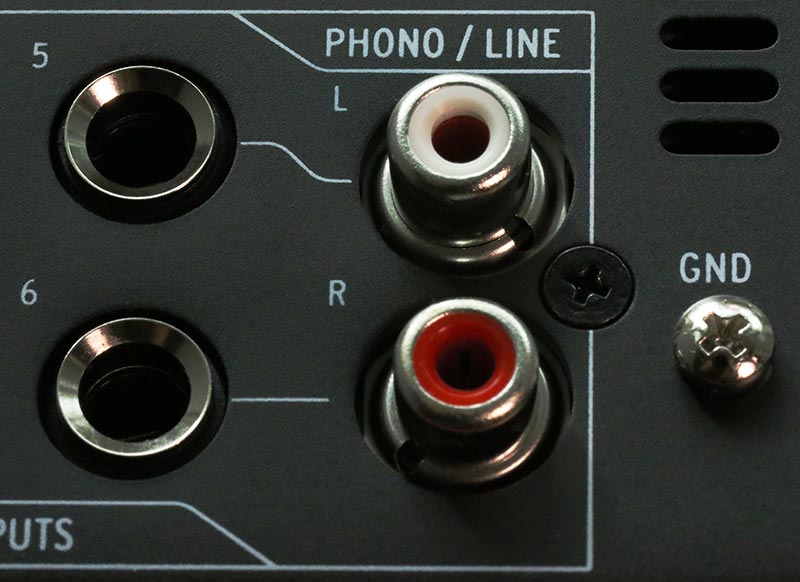
Oh, One More Thing…
The AudioFuse Studio has Bluetooth connectivity. Not just any old Bluetooth either but with aptX and AAC, providing the best audio quality that the wireless technology can currently support. Now Arturia positions this as a way to stream music to your studio’s monitors, but it can also work for podcasting. That’s right, you can combine the audio quality of the AudioFuse Studio’s preamps for your Host’s or Morning Zoo’s microphones, and then use the Bluetooth for call in guests or interviews. This little secret could be the real tipping point for consumers shopping for podcasting solutions, considering good quality designated units, such as the Røde RødeCasterPro, cost almost as much as the AudioFuse Studio.
Conclusion
Hands down, the AudioFuse Studio is an absolute winner. There isn’t a computer audio interface on the market today that combines stellar audio quality with this many sophisticated features at this price point. Our reviewer’s recordings were “transparent” – “pristine” and “without any detectable distortion,” even “at extreme volumes.” It’s a steal at $999 and that’s not even with the inclusion of their bundled Creative Suite plug-ins, which includes effects, classic channel strips and Analog Lab Lite. Easily one of the best products we’ve reviewed in quite some time and on our short list for our 2020 Gear Of The Year awards. Highly Recommended.
Rating: 97%
Cheers:
+ Audio Quality
+ Build Quality
+ Easy-To-Use
+ Flexible & Versatile
+ Phono Input
+ ReAmp Feature
+ Bluetooth Input
+ Talkback
+ WordClock I/O
+ Built-In USB Power
+ USB Power & 2.0 Hub
+ Included Cables
+ AFCC Middleware With Dedicated Launch Button
+ ADAT Expandability
+ Two Headphone Outputs
+ Bonus Software Bundle
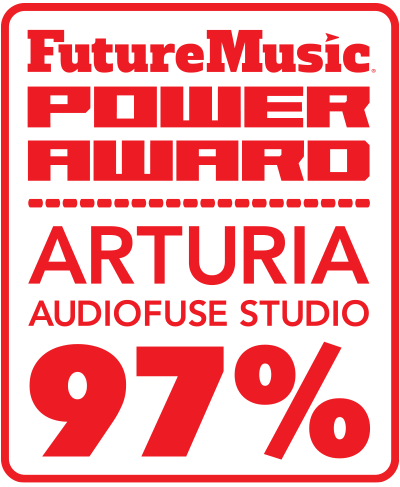
Jeers:
– No XLR Outputs
– “Arty” Output Meters
Arturia’s AudioFuse Studio costs $999 and is available now.
The Future: While we can live with the Olive Branch output meters, the addition of XLR outputs would make the AudioFuse Studio nearly perfect, if Arturia decides to come out with a mkII version.






